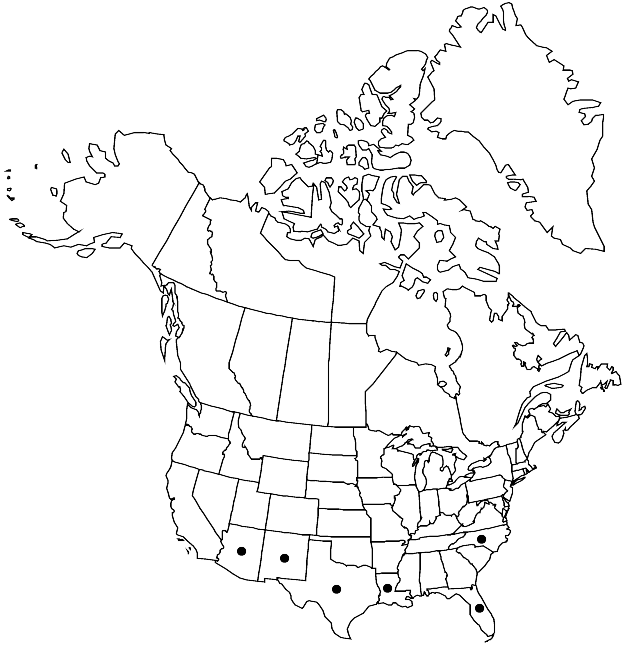Brachymenium macrocarpum
Rev. Bryol. 38: 6. 1911.
Plants in dense cushions, dark green to olive green, not shiny. Stems 1–2 cm, strongly rosulate. Leaves strongly spirally twisted around stem when dry, somewhat concave, 0.6–1.5 mm; margins weakly revolute proximally, plane distally, distinctly serrate, limbidium present; apex broadly rounded-acute; costa short-excurrent, awn yellowish hyaline; proximal laminal cells quadrate; medial and distal cells hexagonal to short-rectangular, 20–50 × 15–20 µm, 2–3: 1. Specialized asexual reproduction by rhizoidal tubers on rhizoids at base of stem, red to orange-red, spheric, 100–300 µm. Seta light-brown to redbrown, 1–2 cm.
Phenology: Capsules mature Apr–Aug (spring–summer).
Habitat: Tree trunks, wood, rock, mineral soil
Elevation: low to moderate elevations (0-1000 m)
Distribution

Ariz., Fla., La., N.Mex., N.C., Tex., Mexico
Discussion
Brachymenium macrocarpum is a distinctive species that forms dense turfs or cushions on trees and rocks. The very similar B. klotzschii (Schwägrichen) Paris is found in Central and South America. Many workers combine the two, but there are differences in capsule morphology, leaf shape, laminal areolation, and asexual reproduction, so the name B. macrocarpum is here retained, based on the Mexican type. In Mexico, the species is known to produce leaf axil bulbils, but these have not been seen in material from the flora area. Rosulabryum andicola is similar and its range overlaps with B. macrocarpum, but it has strongly serrate distal margins with very strong limbidium, filiform leaf axil gemmae, and nodding capsules with a well-developed peristome. In B. macrocarpum, the leaves form rosettes when moist.
Selected References
None.
Lower Taxa
"um" is not declared as a valid unit of measurement for this property."narrower" is not a number."narrow" is not a number.
